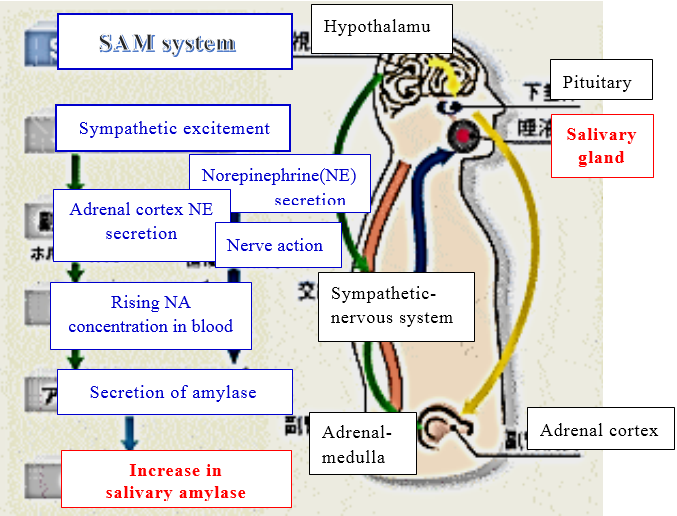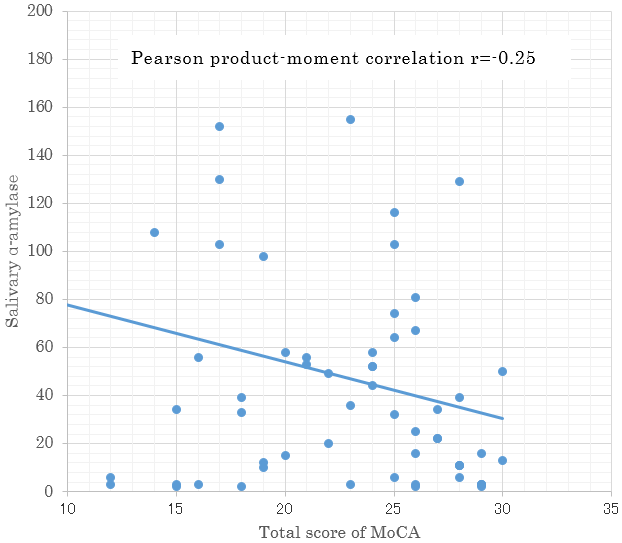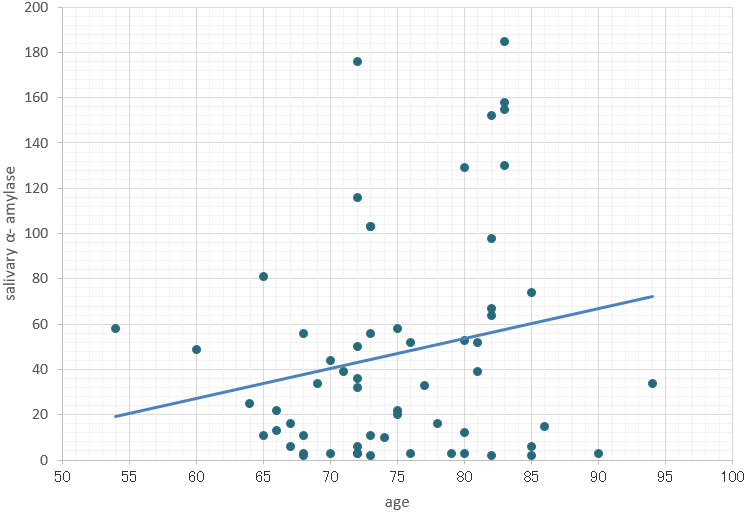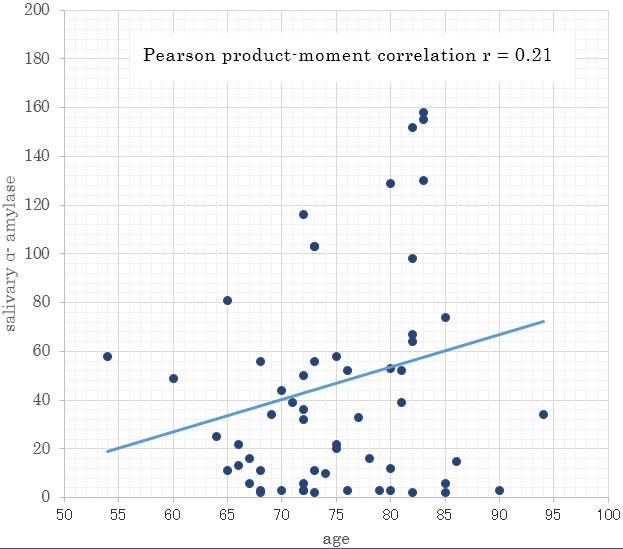Research Article
Volume 1 Issue 1 - 2017
Intervention for Elderly People to Prevent Stress and Cognitive Decline in Subjects
1Nara Medical University, Kashihara, Nara, Japan
2Japan Health Recreation Society, Japan
2Japan Health Recreation Society, Japan
*Corresponding Author: Kazue Sawami, Nara Medical University, Kashihara, Nara, Japan.
Received: April 10, 2016; Published: April 28, 2017
Abstract
Introduction: Alzheimer disease is the most common form of dementia accounting for 60% or more. With 65 years old and above double in incident rate every five years, and countermeasures against the disease has been a pressing issue. In line with this, continuous efforts in executing the screening of mild cognitive impairments to its follow up have been made. The purpose of the research is to measure the effects to the cognitive function through activities such as dual-task, which is the task of doing two things at the same time, and n-back task, which is a memory retention task identifying a task that was presented n times before a certain task. Furthermore, it is also to measure the effects of interpersonal communication games on relieving stress. The research will acquire a controlling period, and compares the control group and the intervention group.
Method: Montreal Cognitive Assessment (MoCA test) which is the screening test of mild cognitive impairment and stress check, which is collecting saliva from the sublingual gland to measure the α-amylase. In the analysis method, a control period is applied after the preliminary research, and the t-test is used to perform the comparison of post-control and post-intervention.
Result: Compared to the control group, the intervention group had significant improvement in their cognitive function and decrease in stress levels.
Conclusion: Dementia-preventing programs that utilize the interpersonal communication game can improve the cognitive function and relieve stress. From here on, the task is to continuously investigate to refine techniques and accumulate an effective program.
Keywords: Interpersonal communication games; Dual-task; n-back task; MoCA-test; α-amylase
Introduction
According to reports from the Japanese Ministry of Health, Labour and Welfare, the prevalence rate of dementia is estimated as 15% of the population of 65 years old and above (2012 estimate) [1]. Among different types of dementia, Alzheimer disease takes up 60%, and about 15%~20% is vascular dementia [2], and among elderlies, there are many cases of a hybrid type that mixed both types of dementia [3]. Alzheimer disease has steadily been increasing by year [4], and elderlies 65 years old and above have doubled their crisis rate every 5 years of aging [5]. For this reason, building countermeasures has been a pressing issue. However, the amyloid vaccine that was developed in the 2000 was not able to suppress the decline in cognitive function, even after the brain’s amyloid β was eliminated [6].
Therefore, at the current state, since the prevention measures prior to the beginning of disease it the most crucial, the project “Alzheimer’s Disease Neuroimaging Initiative (ADNI)” that tackles to suppress the progression of symptoms and to establish an inspection indicator to identify Alzheimer’s disease before its development, had been globally launched [7]. In Japan, J-ADNI was started in 2007, and it is currently at the stage of make regional efforts.
Considering this background, efforts have started in Motosu city, Mizuho city, and Gifu city of Gifu prefecture from continuously performing screening of Mild Cognitive Impairment (MCI), and its follow-up. The screening adopts the MCI screening scale of Japanese version of the Montreal Cognitive Assessment (MoCA-test). The follow up on this is a continuous once a week preventive intervention, and an evaluation of the function every two months.
Through the preventive intervention method, increase of brain derived neurotrophic factor BDNF) and increase in the hippocampal volume due to continuous aerobic exercises has been reported [8]. In brain training, n-back task (memory retention task identifying tasks that was presented n times before a certain tasks) has also been verified to be effective, and as a result of the meta analysis, the revitalization of the frontal cortex and the parietal lobe area have been confirmed [9].
Furthermore, compared to single-task (exclusively performing single tasks such as only a physical activity or only a learning activity), it has been reported that dual-task (performing two tasks as the same time) lets the brain become more active, and revitalization of the prefrontal cortex during the activity [10,11] has been verified. From the prior research and this research, the combined task of both n-back task and dual-task is thought to lead to the revitalization of the brain.
Furthermore, most of the non-drug therapies for maintaining cognitive function are methods that promote comfortable emotions such as music therapy and gardening therapy. Comfortable emotions revitalize the brain reward system region and it becomes the motivation for continuation. In addition, in the examination that compared the influence of positive emotions and negative emotions based on the neutral state, it has been reported that, the positive emotions expand the repertoire of attention, thought, and action, while the negative reduces this repertoire of thinking and action [12]. It has also been reported that improvement in self-efficacy influences improvement in memory [13].
Therefore, an intervention to improve the comfortable and positive emotion is found to be necessary, and in this intervention, the interpersonal communication game was implemented. The intervention technique in this examination mixes the exercise that utilizes the interpersonal communication game with n-back task and dual-task.
The purpose of this examination is to measure the improvement effects to the cognitive function by this intervention program, and to reveal whether positive emotions will improve through the intervention.
Method
Subject: 172 elderlies who applied to this project through advertisement made in each city.
Period: April to December 2016
Period: April to December 2016
Evaluation and Analysis
① The MCI screening will be done in a total of 3 times; before the intervention, after 1 month of non-intervention (after the control period), and a month after the once a week intervention. The screening scale uses the Japanese version of the Montreal Cognitive Assessment (MoCA-test). This is a total of 30 points perfect score, and the higher the score is, the cognitive function is higher, and the cut-off value is 26 points. During the usage of the test, permission has been obtained from the original developer Dr. Ziad Nasreddine and the translator for the Japanese version, Dr. Hiroyuki Suzuki.
① The MCI screening will be done in a total of 3 times; before the intervention, after 1 month of non-intervention (after the control period), and a month after the once a week intervention. The screening scale uses the Japanese version of the Montreal Cognitive Assessment (MoCA-test). This is a total of 30 points perfect score, and the higher the score is, the cognitive function is higher, and the cut-off value is 26 points. During the usage of the test, permission has been obtained from the original developer Dr. Ziad Nasreddine and the translator for the Japanese version, Dr. Hiroyuki Suzuki.
② Comfortability and unpleasant stress levels are measured by collecting the sublingual gland saliva and by measuring its α-amylase. This mechanism reflects the sympathetic nerve activity in Figure 1, and it rises with a discomforting stimuli, while decreasing at a comforting stimuli [14, 15].
Source of Reference: Nipro Corporation
The reference value of α-amylase during secreted saliva from the sublingual gland according to the α-amylase measuring machine by maker Nipro is as in table 1.
The reference value of α-amylase during secreted saliva from the sublingual gland according to the α-amylase measuring machine by maker Nipro is as in table 1.
| 0-30 KU/L | No unpleasant stress |
| 31-45 KU/L | With slight unpleasant stress |
| 46-60 KU/L | With an unpleasant stress |
| 61 KU/L and above | Considerable amount of unpleasant stress |
Table 1: Reference value of α-amylase from secreted saliva in sublingual gland.
Analysis Method: For the before and after comparison of the intervention, the t-test was performed, and the Pearson product-moment correlation was used to analyze the correlation of the cognitive function and stress.
Intervention and Follow up: With once a week continuous intervention, cognitive function evaluation and amylase check is continuously performed every two months. The intervention method is an interpersonal communication game based exercise with a n-back task and dual-task incorporated. N-back task is a delayed recall task that brings in n-back questions. As an example, 1-back task is to answer to one task before, 2-back task is to answer to two tasks before, and 3-back task is to answer 3 tasks before. Dual-task is performing two tasks at the same time such as taking steps while computing. During this latter task, registration was made at the Cognicize office and performed.
Ethical Considerations: An approval from the ethical evaluation committee at a university was obtained. The purpose and method, freedom and right to reject participation, security of privacy, data management method, and results were explained both orally and in written form to the participants, and a written consent was submitted during participation.
Results
Among the 172 participants, data of the 124 that participated until the end were analyzed. The average age of the subjects is 74.7 ± 6, with 11 being male and 113 being female. For the cognitive function, the average value of score for each category on the MoCa test and the t-test results are indicated in table 2.
The average total score in the MoCA test before the intervention was 23.4 points (< 26 points), and it did not meet the cut-off value. After the non-intervention control period of 1 month, when measured again, it was 24.7 points (< 26 points), though with a slight increase in the total score, there was not much changed in each cognitive category.
After the intervention, the average total score was 25.8 points (< 26 points), it increased to a score significantly closer to the cut-off value. For each cognitive item, a significant function improvement was acknowledged in trail making and clock drawing (visual-spatial cognitive ability), verbal fluency (exploration of semantic memory), repetition immediate memory), short-term memory recall delayed memory recall repeat, reciprocal number, target detection, subtraction task concentration, attention, memory) (p < 0.05).
| MoCA test component | Description of the test component (maximum score) | Mean score | ||
| Before | After control | After intervention | ||
| Trail Making | Subject alternates between connecting numbers and connecting letters, in the ascending order"1➝A➝2➝B..." (1) | 0.74 | 0.75 | 0.86** |
| Visuoconstructional skills | The participant is asked to accurately replicate a drawing of a cube. (1) | 0.69 | 0.68 | 0.76 |
| Verbal fluency | The participant is asked to list as many words as possible that begin with a designated letter of alphabet (1) | 0.31 | 0.43* | 0.41* |
| Repetition | The participant is read a sentence and asked to repeat it back exactly. (2) | 0.79 | 0.82 | 0.93* |
| Abstract thinking | The participant is required to describe what characteristic 2 words have in common (2) | 1.62 | 1.68 | 1.74 |
| Naming | The participant is shown pictures of animals and asked to correctly name them (3) | 2.84 | 2.86 | 2.90 |
| Visuoconstructional skills | The partipcant is asked to draw a clock in a specified period of time. (3) | 2.37 | 2.50 | 2.65** |
| Short-term memory recall | The participant must recall a list of 5 words(5) | 3.19 | 3.88 | 4.36** |
| Attention, concentration, other | Repeat, reciprocal number, target detection, subtraction task. (6) | 5.46 | 5.39 | 5.70** |
| Orientation | The participant is asked to give precisely the current date as well as their present location (6) | 5.40 | 5.42 | 5.51 |
| TOTAL SCORE | The total possible score is 30 points. A score of 26 or above is considered normal. | 23.41 | 24.7** | 25.8** |
| Salivary α-amylase | Salivary α- amylase reflects sympathetic nervous activity. It rises following a negative stimulus, and reduces following a positive one. | 42.7 | 48.6 | 31.6* |
Corresponding paired t-test, n = 124
** Significant at 1% level.
* Significant at 5% level.
Table 2: Comparison before and after the intervention and control groups.
** Significant at 1% level.
* Significant at 5% level.
Table 2: Comparison before and after the intervention and control groups.
Next, for α-amylase of the stress measurement results, as indicated in figure 2, there is a correlation with the age. In it indicates that the older the person was the stress level was greater (Pearson product-moment correlation r = -0.25).
The average value of α-amylase before the intervention was 42.7 KU/L, and after the control it did not have much change while only increasing to 48.6 KU/L. After the intervention, a significant decrease to 31.6 KU/L had been seen (p < 0.05).
Furthermore, there is a negative correlation between the results of the cognitive function stress, as indicated in figure 3. The higher the cognitive function of the person, the stress level was lower (Pearson product-moment correlation r = 0.21).
Discussion
The preventive intervention of Alzheimer’s disease performed in local governments is still in the trial and error stage, and establishing an effective technique is an urgent matter. In the efforts made through this research, there was an significant improvement seen in the cognitive functions in terms of visual-spacial cognitive ability, exploration of semantic memory, immediate memory, delayed memory recall, concentration, attention, memory, and total score.
Since it requires the activity of the frontal cortex with a focus on prefrontal cortex to perform two tasks concurrently [16], it was concluded that the frontal cortex was trained during the intervention. In actual, the investigation results have reported that utilized the brain waves and near infrared spectroscopy shows the revitalization of the frontal cortex during performance of the dual-task [17,18]. The decline in functionality due to aging of the prefrontal area occurs at an earlier stage compared to other functions that support other brain regions [19]. With this, it is highly necessary to make efforts in revitalizing the frontal cortex including the prefrontal area at an early stage through the cognitive function training of elderlies.
N-back task was introduced by Wayne Kirchner in 1958, and was initially introduced as a measuring method of temporary memory skill, not only as a method to check skills, but it has now been used as a brain training technique due to the discovery of its effect of improving the temporary memory skill [20]. It has also been discovered as having the effects of improving fluid intelligence [21], increase in dopamine density [22]. Through the combination with dual-task, it can be expected to have a multiplier effect.
Through the effect of this intervention revitalizing the brain reward system by improving positive emotions, it utilizes the interpersonal communication game. After the intervention, the value of the α–amylase secreted in saliva that reflects the stress levels decreased significantly. It has been reported that the increase of the positive emotions also increases the feeling of satisfaction in the activity and in association increases success [23]. improve the immune function [24]., increase in trust toward others bring relationships closer [25]., provide a positive influence to the mental and physical health [26]., and early recovery from diseases [27]. Therefore, a multiplier effect to the result can be expected from the improvement in positive emotions.
From this result, the negative correlating relationship between stress and α-amylase and cognitive functions has also been discovered. Therefore, this indicates that relieving stress is necessary to maintain and improve the cognitive function. Chronic stress also induces cell aging [28]. and it is the factor in the decline of mental function called the functional somatic syndrome [29]. From this research, the correlation of the age and stress has become apparent, and it indicates that the higher the age, the higher chances of a disorder. Therefore, aside from preventing dementia, but to also avoid mental disorders, the significance of stress control in elderly is significant.
The task moving forward is to perform repeated investigation to refine the intervention method for improvement in cognitive function and reducing stress.
Conclusion
Using interpersonal communication game, the combination of the n-back task and dual-task and its intervention improves the cognitive function. The α-amylase in the saliva that reflects stressfulness has a negative correlation with cognitive function, and maintaining and improving the cognitive function requires stress reduction. Furthermore, since age and stress have a positive correlation, in preventive intervention for the elderly, the necessity of adding stress related measures is suggested. For the reason, it will be meaningful to progress with the intervention of the cognitive function improvement and stress relief at the same time, and the development of this program should be addressed in the future.
Acknowledgement
The author, from the bottom of their heart, would like to thank those who participated, and gave their time and help to contribute to this research.
The author, from the bottom of their heart, would like to thank those who participated, and gave their time and help to contribute to this research.
References
- Ministry of Health, Labour and Welfare: About the Current State of Dementia Measures. 115th Nursing Care Payment Subcommittee Material. 2014; 1–21.
- Urakami K. “Early Detection and Prevention of Dementia”. Nihon Rinsho Geka Gakkai Zasshi 72.4 (2014): 607-611.
- Hanyu H. “Diagnosis and treatment of mixed dementia”. Brain and Nerves64.9 (2012): 1047–1055.
- Ministry of Health, Labour and Welfare: Situation of Dementia Hospitalized Patients in Mental Hospital Beds. 13th Review Team Material for Construction of New Community Mental Health Care System. 2010; 1–63.
- Qiu C., et al. “Epidemiology of Alzheimer's disease: occurrence, determinants, and strategies toward intervention”. Dialogues in Clinical Neuroscience11.2 (2009): 111–128.
- Holmes C., et al. “Long-term effects of Abeta42 immunisation in Alzheimer's disease: follow-up of a randomised, placebo-controlled phase I trial”. Lancet372.9634 (2008): 216-223.
- Alzheimer's Association Research Center.: World Wide Alzheimer's Disease Neuroimaging Initiative. Alzheimer's Association National Office. 2014.
- Erickson K., et al. “Exercise training increases size of hippocampus and improves memory”. Proceedings of the National Academy of Sciences108.7 (2011): 3017-3022.
- Owen AM., et al. “N-back working memory paradigm: A meta-analysis of normative functional neuroimaging studies”. Human Brain Mapping 25.1 (2005): 46-59.
- Al-Yahya E., et al. “Prefrontal Cortex Activation While Walking Under Dual-Task Conditions in Stroke: A Multimodal Imaging Study. Neurorehabilitation and Neural Repair30.6 (2015): 591-599.
- Ohsugi H., et al. “Differences in dual-task performance and prefrontal cortex activation between younger and older adults”. BMC Neuroscience14 (2013): 10.
- Fredrickson LB., et al. “Positive emotions broaden the scope of attention and thought‐action repertoires”. Cognition and Emotion19.3 (2005): 313-332.
- West RL., et al. “Self-efficacy and memory aging: the impact of a memory intervention based on self-efficacy”. Neuropsychology, development, and cognition15.3 (2008): 302-329.
- Masaki Yamaguchi., et al. “The Influence of Physical Stress on Amylase Activity in Human Saliva”. Journal of Life Support Engineering 15 (2003): 120-127.
- Takai N., et al. “Effect of physiology stress on the salivary cortisol and amylase levels in healthy young adults”. Archives of Oral Biology49.12 (2004):963-968.
- Yogev-Seligmann G., et al. “The role of executive function and attention in gait”. Movement Disorders 23.3 (2008): 329-342.
- Holtzer R., et al. “fNIRS study of walking and walking while talking in young and old individuals”. The journals of gerontology. Series A, Biological sciences and medical sciences66.8 (2011): 879-887.
- Anguera JA., et al. “Video game training enhances cognitive control in older adults”. Nature501.7465 (2013): 97-101.
- Otsuka Y, Osaka, N: Working memory in the elderly: Role of prefrontal cortex. Japanese. Psychological Review. 2005; 48:518-529.
- Kirchner WK. “Age differences in short-term retention of rapidly changing information”. Journal of Experimental Psychology55.4 (1958): 352-358.
- Susanne JM., et al. “The relationship between n-back performance and matrix reasoning - implications for training and transfer”. Science direct 38.6 (2010): 625-635.
- McNab F., et al. “Changes in Cortical Dopamine D1 Receptor Binding Associated with Cognitive Training”. Science 323.5915 (2009): 800-802.
- Losada M and Heaphy E. “The role of positivity and connectivity in the performance of business reams: A nonlinear dynamics model”. American Behavioral Scientist 47 (2004): 740-765.
- Cohen S., et al. “Emotional style and susceptibility to the common cold”. Psychosomatic Medicine65.4 (2003): 652-657.
- Dunn J and Schweitzer M. “Feeling and believing: The influence of emotion on trust”. Journal of Personality and Social Psychology88.5 (2005):736-748.
- Lyubomirsky SL., et al. “The benefits of frequent positive affect: Des happiness lead to success?”. Psychological Bulletin131.6 (2005): 803-855.
- Cohen S and Pressman SD. “Positive affect and health. Current Directions in Psychological Science15.3 (2006):122-125.
- Ogawa T., et al. “Chronic stress elicits prolonged activation of alpha-MSH secretion and subsequent degeneration of melanotroph”. Journal of Neurochemistry109.5 (2009):1389-1399.
- Henningsen P., et al. “Management of functional somatic syndromes”. Lancet369.9565 (2007): 946-955.
Citation:
Kazue Sawami., et al. “Intervention for Elderly People to Prevent Stress and Cognitive Decline in Subjects”. Current Opinions
in Neurological Science 1.1 (2017): 44-52.
Copyright: © 2017 Kazue Sawami., et al. This is an open-access article distributed under the terms of the Creative Commons Attribution License, which permits unrestricted use, distribution, and reproduction in any medium, provided the original author and source are credited.


































 Scientia Ricerca is licensed and content of this site is available under a Creative Commons Attribution 4.0 International License.
Scientia Ricerca is licensed and content of this site is available under a Creative Commons Attribution 4.0 International License.